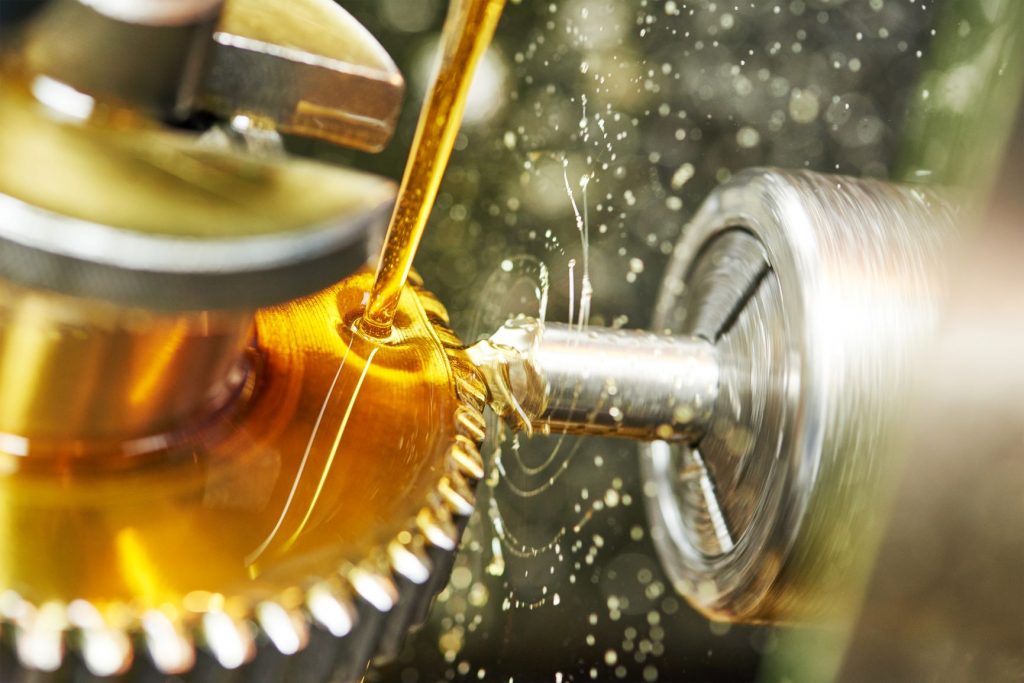Oil. Its basic functions within an engine include reducing friction, cooling, sealing, cleaning, and serving as protection for moving parts. But it’s often taken for granted. Lubricants provide a fluid barrier between moving parts to prevent friction and wear. As for cooling, oil provides up to 40 percent of an aircraft’s air-cooled engine’s cooling. Oil creates a seal between piston rings and cylinder walls. This helps to reduce wear, provide better compression, and keep contaminants out while improving fuel efficiency.

There are several oil parameters that are typically measured either in the laboratory or in the field to determine the health of the oil and the machinery:
- Viscosity is the measure of the oil’s resistance to shear or flow. High viscosity indicates a high resistance to flow while low indicates a low resistance. It varies with temperature and is affected by pressure. Increasing temperature causes viscosity to decrease; conversely reducing temperature causes viscosity to increase. Higher pressure causes viscosity to increase which also increases the oil’s film thickness. Viscosity is measured by shear and time.
- Particle counting is a critical aspect of any machine conditioning program and there are many tools out there available to monitor and track the quantity and severity of the contamination, be it due to external contamination or machine wear. The specific application and type of particles will often govern what is the best particle counting technique for the job at hand. The continuous cleanliness of a hydraulic system, for instance, is very critical and even very low levels of dirt ingress can clog actuators and valves leading to premature failure. On the flip side gear and transmission systems with lots of moving parts coming together will be able to tolerate many more wear particles than a clean hydraulic system.
Total acid number; A high concentration of acidic compounds in a lubricant can lead to corrosion of machine parts and clogged oil filters due to the formation of varnish and sludge. When a lubricant breaks down, acidic by-products will be formed from the chemical decomposition of the base stock and additives in the presence of air and heat. Total Acid Number (TAN) is a measure of acid concentration present in a lubricant. The acid concentration of a lubricant depends on the presence of additive package, acidic contamination, and oxidation by-products. Occasionally, the depletion of an additive package may cause an initial decrease in TAN of fresh oil. However, the accumulation of oxidation by-products and acidic contaminants in an oil over time will always lead to an increase in TAN. This test is most meaningful in industrial machinery applications although sometimes it is recommended in engine applications along with Total Base Number (TBN).
Total Base Number (TBN) is a measure of alkaline concentration present in a lubricant. Engine oils are formulated with alkaline additives in order to combat the build-up of acids in a lubricant as it breaks down. The TBN level in a lubricant is targeted for its application. Gasoline engine oils are typically formulated with starting TBN around 5-10 mg KOH/g whereas diesel engine oils tend to be higher (15-30 mg KOH/g) due to the more severe operating conditions. Specialized applications, such as marine engines, may require >30 mg KOH/g. As the oil remains in service, this BN additive is depleted. Once the alkaline additives are depleted beyond a certain limit the lubricant no longer performs its function, and the engine is at risk of corrosion, sludge, and varnish. At this point it is necessary to top-off or change the oil.
- Elemental Analysis; Spectroscopy is a technique for detecting and quantifying the presence of elements in a material. Spectroscopy utilizes the fact that each element has a unique atomic structure, and when subjected to the addition of energy, each element emits light of specific wavelengths or colors. If this light is dispersed by using a dispersing element, such as a prism, a line spectrum will result. Since no two elements have the same pattern of spectral lines, the collected light can be analyzed and each element contained in the sample identified. Additionally, the intensity of the emitted light is proportional to the quantity of the element present in the sample, allowing the concentration of that element to be determined. These spectral lines are unique to the atomic structure of only one element.
Water; We have all heard the saying, “Oil and water don’t mix.” Unfortunately, that doesn’t necessarily apply to lubrication oils. Water can exist in several states in lubrication oils and can do quite a bit of damage to valuable assets if left unchecked. In this guide we explore the challenges posed by water in lubrication oils and discuss the methods available to reliability professionals for measuring water in oil.
Etc.